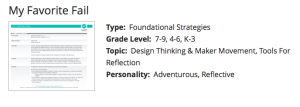Let’s recap on where we are in the merry month of May, celebrating mindset by reflecting on must-dos!
- You have an ideal student in mind-one that embodies a growth mindset and exemplifies agency.
- You are thinking about the power of your words, and possibly using them in different ways to elicit growth-mindset behavior in your students.
- Now what?!
It’s time to think about the nitty gritty logistics behind making these growth-mindset super stars. Let’s dive into how you set up a classroom culture that continues to foster your efforts and what teaching moves you can make to scaffold reflective behavior that also supports developing a growth mindset in your students.
Tip 3: Establish a classroom culture that breeds growth mindset-ness!
The biggest hiccup I see in classrooms (and was fully guilty of myself) is not dedicating the time to nourish a positive classroom culture. The beginning of the school year is a very natural fit for culture-building, but it’s something that truly has to be an ongoing effort. Revisiting norms and frequent reflections on collaboration and agency are integral to making a growth mindset “just what we do”. Students need to feel totally safe and supported to fail and grow. “Growing pains” got it’s name some-how; growing isn’t easy and it’s a vulnerable space for kids, so creating a classroom climate where students feel as though they can be honest about mistakes and leverage those to move forward, with redemption, is key. One way you can do this is by celebrating highs and lows. How can you normalize failure and even take it a step beyond and celebrate is a growth moment?* How can you get students to leverage their peers to help them grow as a learner? In my classroom I referred to my students as “Super Agents” and we reflected upon the descriptors of New Tech’s elementary school agency rubric on a weekly basis, which was ultimately a scaffold for their Student Led Conference. Which leads me to Tip #4…
*if this question peaked your interest and raised your eyebrow, check out CraftED Curriculum’s Foundational Strategy “My Favorite Fail” for more!
Tip 4: Scaffold back from your end in mind
In my first tip I suggested having an end in mind-what is your big goal for your super star learners? Now how are we going to get them there? Scaffolding just means giving students the building blocks that will turn them into the masterpiece you have in mind. Scaffolding growth mindset could look like any of the following:
- Let them in on the secret-share the brain research, videos and resources with them on growth mindset, grit, persistence, etc. Give them the power of knowing “the why” behind what you are doing in class.
- Maybe even consider having them develop their own definition of growth mindset and class goals for becoming a Super Agent. Check out CraftED’s strategy “Co-developing deeper learning assessments” for teacher moves for this.
- Whatever form of assessment or learning targets you are striving for (again, that “end in mind”) break down the language for students-make it kid-friendly. Have them talk about what it “looks, sounds, feels like”.
- Maybe even have some fun with skits (and costumes, of course!) for students to think about what these characteristics look like in particular contexts. Have a meta debrief after each one and process with your students about what they saw and are thinking, as it relates to growth-mindset
- Build in time for frequent reflection. What’s that look like? Stay tuned for our next post on student reflection as our final growth mindset must-do!

